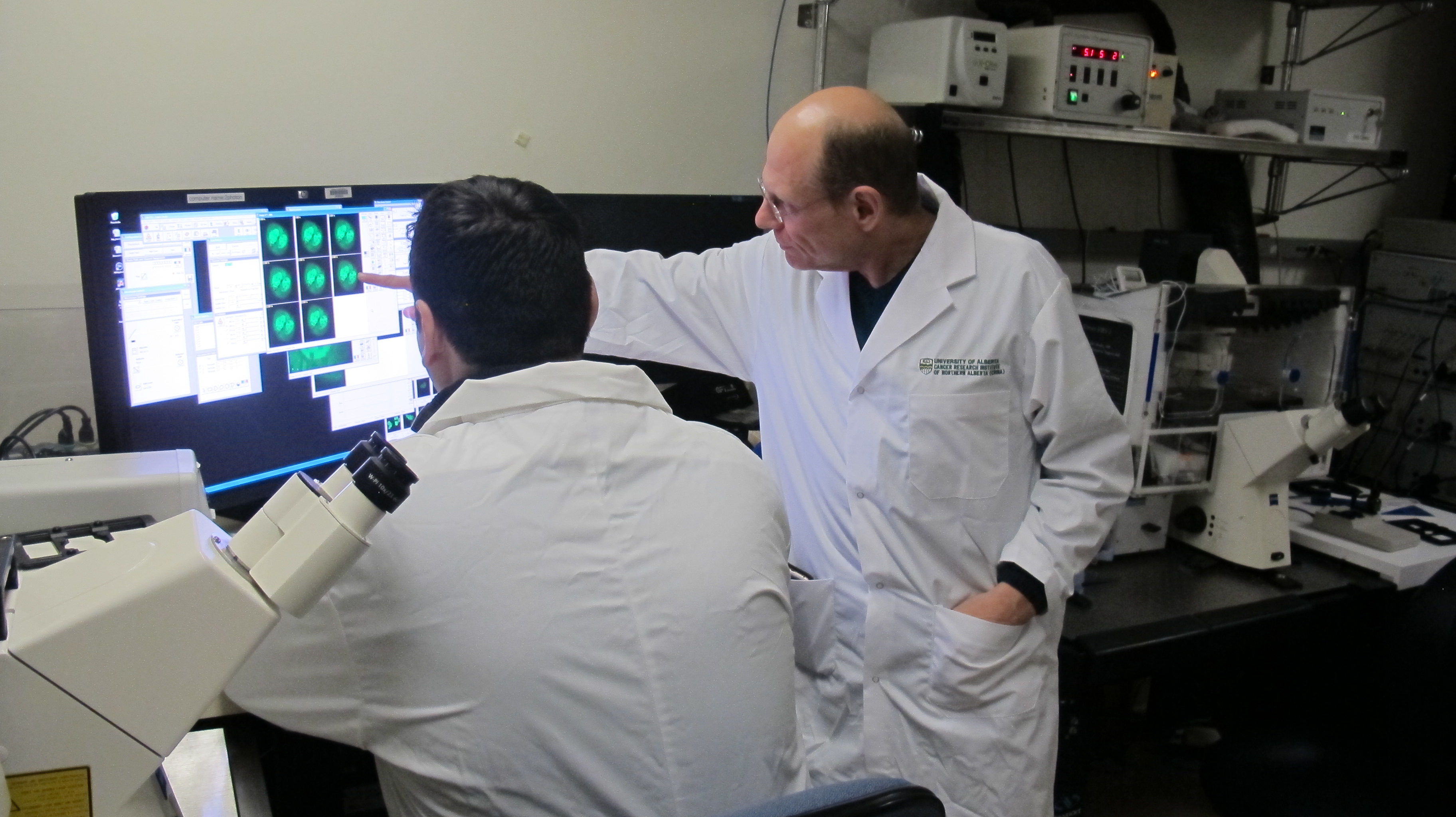Jason Dyck is one of two Faculty of Medicine & Dentistry researchers receiving a major grant from CFI. Dyck's grant will allow him to establish a new Heart Failure Translational Research Centre at the U of A.
A unique research centre that will help physicians better understand heart dysfunction and how to treat it will be built at the University of Alberta through the support of a $2.9 million grant from the Canada Foundation for Innovation (CFI). The Heart Failure Translational Research Centre will use the same technologies currently available for patients today, such as magnetic resonance imaging (MRI) or an echocardiogram, but for animals.
"We're closing the research loop that links human research with animal research," said Jason Dyck, director of the Cardiovascular Research Centre at the U of A and Canada Research Chair in Molecular Medicine.
"As an example, by using MRI, clinical researchers might detect cardiac dysfunction that can't be detected using other imaging techniques. However, if we can't study that problem in animals, we can't discover new treatments. With our new equipment, we can feed back the human data to the animal research and perform identical measures using the animal versions of the equipment. If we can then find and show a treatment strategy that helps in animals, clinical researchers are going to be very enthusiastic to potentially try it in humans."
The funding for the research centre was announced today as part of a CFI investment of more than $554 million in 117 new infrastructure projects at 61 universities, colleges and research hospitals across Canada through the Innovation Fund. Six projects were funded at the U of A, with two of them led by Faculty of Medicine & Dentistry researchers.
Examining the origins of human diseases at the molecular level
Along with Jason Dyck, professor of oncology Michael Hendzel is also receiving a grant worth $3 million to develop new microscopy technology to better understand how molecules work inside of cells. The technology will allow U of A scientists to perform research at the mesoscale and nanoscale levels in order to advance research in cancer, virology and cell biology.
"The mesoscale represents a frontier where very little is known. If we use the example of our genome-we know that the mesoscale structure that it adopts determines how our genes and genome is regulated. However, we do not know what that structure is or how it works. This is because we don't have the proper instrumentation or techniques to study it at that scale," said Hendzel, a member of the Cancer Research Institute of Northern Alberta.
"Much of this is delving into the unknown and while that means that we cannot predict where this work will lead, we can be certain that it moves us forward towards better understanding our health and better treating human diseases. Human cancers involve reorganization of the genome on this scale and understanding what is going on is a critical step to reversing or stopping it. Combined with colour electron microscopy technology that we have developed in Edmonton, this new equipment will provide us with the technology to address these otherwise unsolvable questions," said Hendzel.
"The Innovation Fund encourages institutions and its researchers to think big and strive to be global leaders by conducting world-class research," said Kirsty Duncan, Minister of Science, in a statement. "This funding pushes researchers to aim higher in their pursuits by collaborating across disciplines, institutions and sectors. With this support, institutions can build on their current research strengths and set their sights on accelerating research that will create social, health, environmental and economic benefits for all Canadians."
For Dyck, the funding is a welcome and necessary step forward in the U of A's efforts to treat heart failure. The Heart Failure Translational Research Centre will replace a now outdated centre that was built in 2009 for a similar purpose. That facility enabled multiple research projects that have progressed to clinical trials and could soon lead to improved patient care. Dyck believes the new research centre will have a similar impact.
"The old equipment has been heavily utilized, to the point now it's breaking down and becoming obsolete. So we need to upgrade that so it is state-of-the-art again," said Dyck. "This is an important engine that feeds the clinical research."
